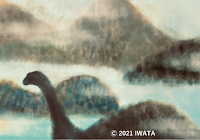注目
以前「 FRB(アメリカ連邦準備制度)の赤字 」について 2025Q3 まで更新されたので、グラフを延長する。データ、出所などの説明は以前の記事を参照。 FRBの利息収入( 青い破線 )は2022Q2以降、ほぼ同水準で変動しているが、利息費用( 緑二重線 )が2023Q3から徐々に減少している。それ以外に債権(国債など)と債務(当座預金)の額を考慮する必要があるが、ここでは省略している。財務省への送金前の純所得( 赤い線 )の赤字はかなり縮小してきた。2025Q3も前期比べてごくわずか赤字は拡大したが、蛍光的には銀行業資本として正常な状態に戻りつつあるといえる。 なお、用語の対応は、 総利息収入Total interest income、 総利息費用 Total interest expense 財務省への送金前の純所得 Reserve Bank and consolidated variable interest entities net loss before providing remittances to the Treasury 損失の場合は、 Reserve Bank and consolidated variable interest entity net loss before providing remittances to the Treasury 準備預金への利子率 Interest rate on reserve balances (IORB rate)
過去の授業資料(段階論)2019、2020年度
今回は段階論の授業資料。段階区分は加藤栄一の説に基づく。従来の宇野の説とどう違うかは授業資料の中で対比している。また、しつこいようだが、既存の段階論については私の論文『宇野弘蔵の段階論の方法における歴史と現在 : 典型・中心,自由主義の観点から』で論じた。
「経済発展の理論」
この「経済発展の理論」は現代の手前までの段階論の授業。前期(a)は通史、後期(b)はテーマ別に段階的変化を論じる。テーマは授業回数の関係で数を絞り、「労働」「福祉」「商業」「信用(金融)」。
2020年度と2019年の2つがあるのは、2020年度は遠隔授業となり、授業の形式が大きく変わったからである。
従来の宇野派の段階論は通史しかなかった。たとえば『経済学 II -- 資本主義経済の発展』
通史とテーマ別に分ける方法は最近では、『世界経済の歴史―グローバル経済史入門』しかしこれは経済史の本なので内容は段階論には適さない。
「現代資本主義論」
「現代資本主義論」は別の大学で担当する科目である。英文タイトルがModern Capitalism from the Historical Perspective となっており、現代だけでなく歴史的展開も範囲となる。現代を含む段階論の総体になる。なお、これは以前の記事で添付したものと同じ。
最初に手短に通史をやって、原理論の順序に合わせてテーマ別に段階的変化を論じる。主なテーマは「商品と私的所有」「貨幣」「労働」「福祉」「利潤(会計)」「超過利潤・地代」「商業」「信用(金融)」となる。詳しい内容は今後、機会があれば説明する。
「景気循環」
「景気循環論」の授業でも一部は歴史的変化を取り扱っている。これは段階論というほどのものでもないが、段階論を補足するモノとしてここに付けておく。


コメント
コメントを投稿